It looks like you're using an Ad Blocker.
Please white-list or disable AboveTopSecret.com in your ad-blocking tool.
Thank you.
Some features of ATS will be disabled while you continue to use an ad-blocker.
share:
a reply to: Gordi The Drummer
Hi Gordi, no problem! The way things are looking you might almost be forgiven for wondering if there wasn't a conspiracy to silence the Picts at some time..
Come back soon, we need you!
Hi Gordi, no problem! The way things are looking you might almost be forgiven for wondering if there wasn't a conspiracy to silence the Picts at some time..
Come back soon, we need you!
a reply to: Logarock
Earlier you were thinking that the mirror might have feminine/lunar connotations and here there is an example of gold/silver, sun/moon, day/night. I wonder if the mirror and the silver comb are then interchangeable, hence their pairing on stones?
Earlier you were thinking that the mirror might have feminine/lunar connotations and here there is an example of gold/silver, sun/moon, day/night. I wonder if the mirror and the silver comb are then interchangeable, hence their pairing on stones?
CIR MHIN OIR - comb of chased gold. A sun symbol its equivalent night-symbol being the cir gharbh airgiod, the comb of rough silver.
originally posted by: beansidhe
a reply to: Ramcheck
You see I was just thinking along those lines. She came to Hibernia from the Iberian peninsula? Really? I'm wondering where Iberia comes from - it's like Hebrew, hebrides, same type of roots. I'll need to try and find that now.
I'll speak to my dad tomorrow and ask him about currents (he was a fisherman), because it could be that the natural place to end up in from Spain would be Ireland.
One of the males from my family did the DNA test. He says it showed that our family has same DNA in three "pockets" of location in Ireland, Scotland and Spain and not in any order of migration. Now that's a narrow DNA rendering. That's just close types. You can expand the criteria or whatever they call it and certainly the area of relationship would widen.
There is a Spanish lady that works near here. We talked once. She tells me that in the mountains of Northern Spain they play the pipes and that its commonly known in Spain that these folks are related to Scots according to her.
These Spanish pipes look more like the Welsh sort? In fact listing to some of the folksier samples on you tube under that heading, it all sounds more like traditional Welsh sort of music at times and then sometime with more drum like the Scots excel in.
edit on 17-5-2014 by Logarock because: n
a reply to: Logarock
Now that is interesting. I just quickly looked at the Scottish/ Spanish connection and came across this:
Ancient Scotland: The Spanish Connection
That is a good site, I'm going to have a proper read. How exciting if you're a descendant of Bile/Bel (your Highness!!)
Now that is interesting. I just quickly looked at the Scottish/ Spanish connection and came across this:
Of even more interest to Pictophiles, King Brigus' son was named Bile, and he was also a Celtic King of Spain. Several Pictish Kings were also called Bile or Bili, including its most famous King, the destroyer of the Angles at Dunnichen in 685 A.D. The name Bile is of high interest also to students of Celtic mythology. According to the Celtic Encyclopedia
"In British tradition he was called Bel or Belinus, but in Irish he was Bile. In some texts, he is said to come to Ireland from Spain - which is clearly intended to be the Land of the Dead. The fires of Beltaine were lit to mark his recognized feast. Very little is known of his mythos, but he, like Danu who is sometimes named as his consort, was a powerful ancestral deity to the Celtic races. (bil-ay) One of the names of the god of Death (i.e. of the Underworld), father of Miled; equivalent, Cymric god Beli, husband of Don".
Bile's son was Milesius, perhaps the most famous of all the Celtic Kings of Spain and the father of the Irish race. As a youth Milesius, distinguished himself as a warrior in Egypt and was also known as Galamh.
Ancient Scotland: The Spanish Connection
That is a good site, I'm going to have a proper read. How exciting if you're a descendant of Bile/Bel (your Highness!!)
All of these stories have a number of similarities which really shouldn't be ignored. Someone comes from Egypt/Northern Africa (Med) and someone comes
from Thrace/Scythia (Black Sea). Somehow they meet settle around Spain, and their descendants become the Picts/Gaels/Scots.
Given that the Celts were wanderers and that the druids were Celts, and that the Druids prized oral history and memory, and that the Celts are still known as storytellers...could we see all of these different-yet-same stories as simply a vehicle for remembering their origins?
I know that might sound blindingly obvious, but what I mean is the names and places change but the theme is what is important, what has to be conveyed. If that is correct, then we could possibly start to interpret each symbol within it's own cultural context. For example, the Dacian dog-headed fish monsters probably mean the same in Pictland as they do in Romania - they were battle standards.
Given that the Celts were wanderers and that the druids were Celts, and that the Druids prized oral history and memory, and that the Celts are still known as storytellers...could we see all of these different-yet-same stories as simply a vehicle for remembering their origins?
I know that might sound blindingly obvious, but what I mean is the names and places change but the theme is what is important, what has to be conveyed. If that is correct, then we could possibly start to interpret each symbol within it's own cultural context. For example, the Dacian dog-headed fish monsters probably mean the same in Pictland as they do in Romania - they were battle standards.
edit on 17-5-2014 by beansidhe because: sp
Haha! My first foray into Galician folklore and guess what?
"The legends about them (fairies) are widespread all over Galicia. There are no remains of feudal castles, monasteries nor other buildings, grottos or cave, castros, burial mounds, dolmens and other prehistoric monuments, which have not got its own legend. The same happens with the pools of lakes and rivers, and the still waters of lakes and lagoons. Whether a very beautiful woman who, combing her hair with a golden comb, appears where hidden treasures are kept safe - and beware those who dare to look at her, or talk to her and cannot disenchant her..."
www.udc.es...
Some Galicians, like in Log's clip:
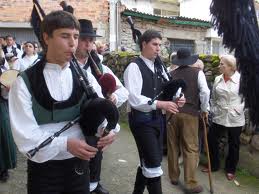
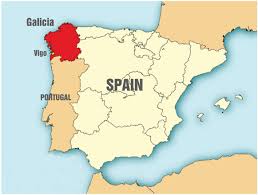
"The legends about them (fairies) are widespread all over Galicia. There are no remains of feudal castles, monasteries nor other buildings, grottos or cave, castros, burial mounds, dolmens and other prehistoric monuments, which have not got its own legend. The same happens with the pools of lakes and rivers, and the still waters of lakes and lagoons. Whether a very beautiful woman who, combing her hair with a golden comb, appears where hidden treasures are kept safe - and beware those who dare to look at her, or talk to her and cannot disenchant her..."
www.udc.es...
Some Galicians, like in Log's clip:


a reply to: beansidhe
Cliffhanger much? Lol.
Reminds me a little of medusa?
Mmkay!
I already know how the story goes, when one tames her.
It is the feminine part of Every man that is lost growing up through the "separation." She is not lost per se, but buried and forgotten.
The complete "us" has no gender or boundary. When we break the chains of separation she is there, a reflection of sorts.
The treasure is the wisdom and knowledge, marriage/re-uniting, ect..
Shapeshifting reptilian I tell ya!...
...But it's not entirely true how david Icke has portrayed it.
The same happens with the pools of lakes and rivers, and the still waters of lakes and lagoons. Whether a very beautiful woman who, combing her hair with a golden comb, appears where hidden treasures are kept safe - and beware those who dare to look at her, or talk to her and cannot disenchant her...
Cliffhanger much? Lol.
Reminds me a little of medusa?
Mmkay!
I already know how the story goes, when one tames her.
It is the feminine part of Every man that is lost growing up through the "separation." She is not lost per se, but buried and forgotten.
The complete "us" has no gender or boundary. When we break the chains of separation she is there, a reflection of sorts.
The treasure is the wisdom and knowledge, marriage/re-uniting, ect..
Shapeshifting reptilian I tell ya!...
...But it's not entirely true how david Icke has portrayed it.
edit on 17-5-2014 by Wifibrains because: (no reason given)
a reply to: Wifibrains
Aah, two halves of a whole? That's a beautiful interpretation, it makes sense. Thanks Wifi.
I hadn't thought of Medusa, I thought of water/banshees/mermaids, but now you say it, it is the same story - the hair, being entranced/turned to stone. Hmm, that's interesting.
Yes Icke has his own interpretations of myth, much like a turnip would if you asked it to explain the supernatural (I'm not a fan).
I came across this a minute ago:
History news
The Iberian link is true then. So it follows that if the Milesian history is not myth, then why would the rest be? This is exciting!
Aah, two halves of a whole? That's a beautiful interpretation, it makes sense. Thanks Wifi.
I hadn't thought of Medusa, I thought of water/banshees/mermaids, but now you say it, it is the same story - the hair, being entranced/turned to stone. Hmm, that's interesting.
Yes Icke has his own interpretations of myth, much like a turnip would if you asked it to explain the supernatural (I'm not a fan).
I came across this a minute ago:
Brian Donnelly, The Herald (Glasgow), 10 Sept. 2004
Celtic nations such as Scotland and Ireland have more in common with the Portuguese and Spanish than with the Celts of central Europe, according to a new academic report.
Historians have long believed that the British Isles were swamped by a massive invasion of Iron Age Celts from central Europe around 500BC.
However, geneticists at Trinity College in Dublin now claim that the Scots and Irish have more in common with the people of north-western Spain.
Dr Daniel Bradley, genetics lecturer at Trinity College, said a new study into Celtic origins revealed close affinities with the people of Galicia.
He said:"It's well-known that there are cultural relations between the areas but now this shows there is much more. We think the links are much older than that of the Iron Age because it also shows affinities with the Basque region, which isn't a Celtic region."
He added:"The links point towards other Celtic nations, in particular Scotland, but they also point to Spain."
Historians believed the Celts, originally Indo-European, invaded the Atlantic islands in a massive migration 2500 years ago.
But using DNA samples from people living in Celtic nations and other parts of Europe, geneticists at the university have drawn new parallels.
Dr Bradley said it was possible migrants moved from the Iberian peninsula to Ireland as far back as 6000 years ago up until 3000 years ago.
History news
The Iberian link is true then. So it follows that if the Milesian history is not myth, then why would the rest be? This is exciting!
a reply to: Wifibrains
I was gonna post about the mirror then while driving around I received a divine revelation over the radio from that ascended master…J. T. aka Justin Timberlake
Mirrors
Sounds like JT is in the know
I was gonna post about the mirror then while driving around I received a divine revelation over the radio from that ascended master…J. T. aka Justin Timberlake
Mirrors
Sounds like JT is in the know
edit on 17 5 2014 by zardust because: (no reason given)
a reply to: zardust
He could be, I just watched the video, there are references to marriage, and the end was quite deep.
I been hearing some fascinating stuff coming through music lately.
Commercials, movies, cartoons, art, ect, are bursting at the seams with it. Question is, where is it all coming from? There seems to be more than one reality for me, could I have one foot in the grave? Lol.
He could be, I just watched the video, there are references to marriage, and the end was quite deep.
I been hearing some fascinating stuff coming through music lately.
Commercials, movies, cartoons, art, ect, are bursting at the seams with it. Question is, where is it all coming from? There seems to be more than one reality for me, could I have one foot in the grave? Lol.
a reply to: Wifibrains
I've never watched the video before just now, I've heard the song a lot. I was posting kind of tongue in cheek, but that video definitely is rich with symbolism. At the very end the woman was represented as the tri-goddess.
Here is the album cover
[atsimg]http://files.abovetopsecret.com/files/img/ck5378cc95.jpg[/atsimg]
When I saw that it made me say hmm.
I've never watched the video before just now, I've heard the song a lot. I was posting kind of tongue in cheek, but that video definitely is rich with symbolism. At the very end the woman was represented as the tri-goddess.
Here is the album cover
[atsimg]http://files.abovetopsecret.com/files/img/ck5378cc95.jpg[/atsimg]
When I saw that it made me say hmm.
a reply to: Wifibrains
Thought this had a deeper meaning...
They can't be talking about the newspaper surely?
See what I mean! Lol.
Thought this had a deeper meaning...
They can't be talking about the newspaper surely?
See what I mean! Lol.
Timberlake?? TIMBERLAKE?? Good grief, lol!
The Mirror does make me think, Wifi, but I can't repeat here what it makes me think (tee hee).
I've gone back, back to the Minoans again because of Medusa and Greece/Crete.

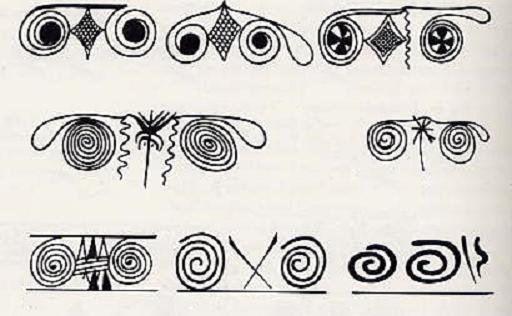
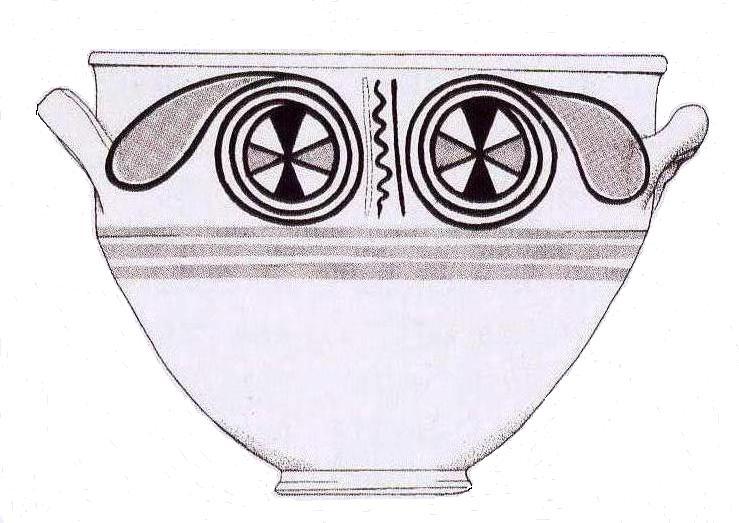
ancientlights.org...
Worth a read, as it discusses the continuity of symbols and the group identity they offer to the individual.
If it is true that the Druids and Celts believed in reincarnation, the sun symbol would be the perfect vehicle to carry this message - the sun is reborn every morning, and the metaphor must be as old as the hills.
The Mirror does make me think, Wifi, but I can't repeat here what it makes me think (tee hee).
I've gone back, back to the Minoans again because of Medusa and Greece/Crete.


Not least in our pursuit of calendric connections, below are two more Philistine forms that seem to carry old ones. At left we see two examples of a gesture reminiscent of the Minoan “vegetal Labrys,” as each pair posed like a sprouting flower endows a symbol of time with signs of literal life (and in one, there again at center is the sign for “Snake”). At right, we find the Great Year cycle’s spiral-wheeled X bluntly juxtaposed with opposed crescents: a pairing that again reflects both the lights and shadows of the Great Year/Saros cycles.

If Snake was the Minoans’ sacred animal of Winter, this figure between two signs for Great Year cycles might correspond to the central calendric anchor of New Year Day at Winter Solstice: an ultimate expression of temporal and spiritual rebirth. Do these spiral-wheels and snakes not speak like the old Minoan masons’ marks of Labrys and Star—one symbolic of the calendric “way,” and the other signifying its promise or goal, the center-point of time and of infinite space?
ancientlights.org...
Worth a read, as it discusses the continuity of symbols and the group identity they offer to the individual.
If it is true that the Druids and Celts believed in reincarnation, the sun symbol would be the perfect vehicle to carry this message - the sun is reborn every morning, and the metaphor must be as old as the hills.
edit on 18-5-2014 by beansidhe because: another picture
a reply to: Gordi The Drummer
I really, really think they are Gordi. They are consistent, sometimes with and sometimes without the snake (winter). That encourages me to think that they are meaningful representations of something, and not just a pattern.
The author says they represent the year, using the solar discs as the sun being reborn.
I need to find dates for these, but I'm pretty sure these are the grandfathers of our double discs!!
"“Continuity in practice does not mean identity of practice” (Whitley 2009: 281). These signs cross far too much time and cultural difference to suggest identical meanings and religious uses. They only ask the reader to notice their central elements’ relationships, persistence and similarity amid change. “Unconscious patterns of religious expression” also “may have existed,” and a “Bronze Age heritage” in Crete and Cyprus at least have been “well-documented” (D’Agata 2009: 7-8)."
I really, really think they are Gordi. They are consistent, sometimes with and sometimes without the snake (winter). That encourages me to think that they are meaningful representations of something, and not just a pattern.
The author says they represent the year, using the solar discs as the sun being reborn.
I need to find dates for these, but I'm pretty sure these are the grandfathers of our double discs!!
"“Continuity in practice does not mean identity of practice” (Whitley 2009: 281). These signs cross far too much time and cultural difference to suggest identical meanings and religious uses. They only ask the reader to notice their central elements’ relationships, persistence and similarity amid change. “Unconscious patterns of religious expression” also “may have existed,” and a “Bronze Age heritage” in Crete and Cyprus at least have been “well-documented” (D’Agata 2009: 7-8)."
edit on 19-5-2014 by beansidhe because: Quote added
Minoan empire was from 2000 BC -1400BC.
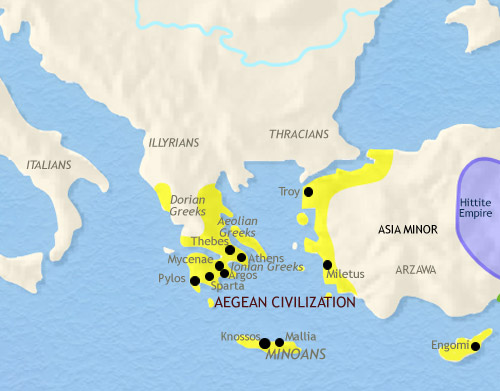
If I can find just one contemporaneous example amongst their neighbours, I'll be convinced!

If I can find just one contemporaneous example amongst their neighbours, I'll be convinced!
originally posted by: beansidhe
a reply to: Gordi The Drummer
"“Continuity in practice does not mean identity of practice” (Whitley 2009: 281). These signs cross far too much time and cultural difference to suggest identical meanings and religious uses. They only ask the reader to notice their central elements’ relationships, persistence and similarity amid change. “Unconscious patterns of religious expression” also “may have existed,” and a “Bronze Age heritage” in Crete and Cyprus at least have been “well-documented” (D’Agata 2009: 7-8)."
"Unconscious patterns". I have been seeing and hearing this more of late in other names and styles. Just saw a new one the other day. A lot of it is in my opinion hocus pokus dreamed up by what are supposed to be rational nuts and bolt archeologist types to counter the growing surge, the incoming tidal wave born out of a new look at cross cultural similarities due to contact. The last gasp! Toss Jung at them call it synchronicity.
A Syrian style winged disk on a Pict stone.....no way anything other than just what it looks like.
The mirror, the feminine half, water, mermaids, the "black" lake.....
...Harry potter! Lol
edit: all that was missing was a Z rod and dbl discs...
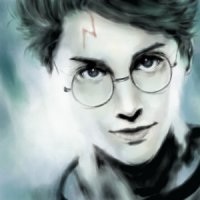
www.google.co.uk... harry potter glasses symbol
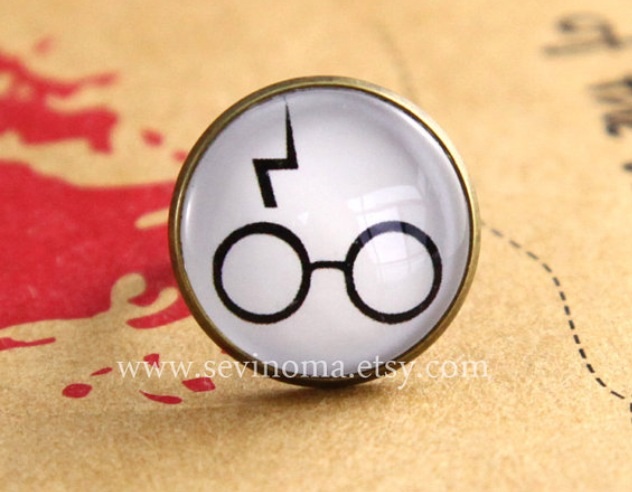
Lol.
...Harry potter! Lol
edit: all that was missing was a Z rod and dbl discs...

www.google.co.uk... harry potter glasses symbol

Lol.
edit on 20-5-2014 by Wifibrains because: (no reason given)
edit on 20-5-2014 by Wifibrains because: (no reason
given)
new topics
-
Democrats send letter to Biden urging him to ratify Equal Rights Amendment
US Political Madness: 2 hours ago
top topics
-
Reprehensible Behavior
US Political Madness: 14 hours ago, 10 flags -
This is adorable you guys!
General Chit Chat: 13 hours ago, 8 flags -
Defending the need for adherence to Old Testament commandments under the new covenant of Christ
Conspiracies in Religions: 15 hours ago, 5 flags -
Democrats send letter to Biden urging him to ratify Equal Rights Amendment
US Political Madness: 2 hours ago, 1 flags
active topics
-
Light from Space Might Be Travelling Instantaneously
Space Exploration • 28 • : Lazy88 -
More Bad News for Labour and Rachel Reeves Stole Christmas from Working Families
Regional Politics • 9 • : covent -
Democrats send letter to Biden urging him to ratify Equal Rights Amendment
US Political Madness • 2 • : VariedcodeSole -
Post A Funny (T&C Friendly) Pic Part IV: The LOL awakens!
General Chit Chat • 7914 • : Cymru -
George Stephanopoulos and ABC agree to pay $15 million to settle Trump defamation suit
Mainstream News • 25 • : Echo007 -
Defending the need for adherence to Old Testament commandments under the new covenant of Christ
Conspiracies in Religions • 24 • : FullHeathen -
-@TH3WH17ERABB17- -Q- ---TIME TO SHOW THE WORLD--- -Part- --44--
Dissecting Disinformation • 3713 • : 777Vader -
Rant. I am sick of people saying the police are revenue raising.
Rant • 12 • : inflaymes69 -
Reprehensible Behavior
US Political Madness • 10 • : nugget1 -
Drones everywhere in New Jersey ---and Elsewhere Master Thread
Aliens and UFOs • 174 • : nugget1
